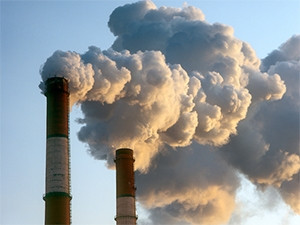
Computing giant IBM has partnered with the Council for Scientific and Industrial Research (CISR) and the City of Johannesburg (COJ) to use advanced technologies like the Internet of things (IOT) to curb air pollution in the city.
Johannesburg is the economic hub of SA, generating 17% of the country's GDP. Building on IBM's global Green Horizons initiative, the partnership will leverage IOT technologies combined with the analytical power of cognitive computing to provide insights and recommended actions to help improve air quality and protect the health of Johannesburg citizens.
Researchers from IBM's SA research lab will work closely with experts from the city and the CSIR to analyse historical and real-time data from environmental monitoring stations across the Gauteng province, including the City of Johannesburg, the City of Tshwane and the Vaal Industrial Triangle.
The objective is to uncover greater insight about the nature and causes of air pollution as well as model the effectiveness of intervention strategies. In a second phase, the programme will be extended to include high-accuracy air pollution forecasting for planning and decision support, and to enable proactive approaches to air quality management.
Mining town
Nthatisi Modingoane, deputy director of media relations at COJ, says the challenges in Johannesburg emanate from the fact that the city was originally established as a mining town.
"With this, there's a legacy of mine dumps, generating suspended particulate matter (PM10 and PM2.5). Also, with the boom of the mining economy, more people than planned continually immigrate to the city, resulting in increased traffic levels, and more incidence of domestic fuel burning in the townships," says Modingoane.
He points out the project will blend various predictive models, including traffic flow, weather forecasting, air pollution and economic data, which will assist city officials to explore various options pertaining to air pollution scenarios.
IBM says the city's mine dumps, residential and traffic emissions generated by the city's population of approximately 4.5 million people contribute to air pollution challenges that include ultrafine particulate matter the most harmful to human health.
IBM's Green Horizons initiative draws on innovations from the company's global network of research labs with contributions from leading environmental experts. At the heart of the initiative are air quality management systems that draw on vast amounts of environmental big data generated by thousands of sensors in environmental monitoring stations, traffic systems and meteorological satellites.
The company notes cognitive technologies understand this data, and use it to tune a predictive model that shows where the pollution is coming from, where it will likely go, and what will be its potential effect. This allows for more informed decisions about how to improve air quality.
"Air pollution is the world's single largest environmental health risk. While Johannesburg does not yet have the air pollution challenges associated with the world's megacities, continued economic and demographic growth mean that action must be taken now to safeguard the future health of the city and its people," says Solomon Assefa, director of IBM's SA research lab.
"The combined power of the Internet of things and cognitive computing means that understanding, managing and forecasting air quality today is more technically and economically feasible than ever before."
Clear the air
Tapiwa Chiwewe, research scientist for IBM Research - Africa, says the key challenge for the city is essentially to mitigate emission rates and reduce air pollutants.
"IBM's advanced decision analytics and now IOT technologies, combined with cognitive computing to ingest and learn from vast amounts of big data, will help to create accurate air pollution forecasting systems for the city," says Chiwewe.
Dr Rebecca Garland, CSIR atmospheric scientist, says one challenge the City of Johannesburg has is the variety of sources of pollutant emissions, like those from vehicles, domestic fuel burning, veld fires, volatile organic compounds from trees, and others that can lead to high levels of air pollution.
"This is a common challenge that many cities and areas in South Africa face. In order for the city to craft and implement effective air quality management plans, it is important that policymakers can quantitatively assess and prioritise potential interventions and projects aimed at improving air quality. This collaborative project will work towards such an assessment, thus providing a strong scientific and evidence base for the city to make informed decisions on air quality management," Garland concludes.
Share